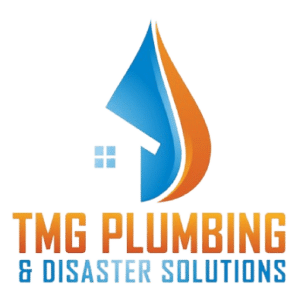Plumbing problems can be a major inconvenience in any household. From leaky faucets to clogged drains, these issues can disrupt our daily routines and cause unnecessary stress. Luckily, with a little knowledge and some basic troubleshooting skills, many plumbing problems can be resolved without the need for professional assistance. In this article, we will explore some common plumbing problems and provide step-by-step instructions on how to troubleshoot and fix them.
Understanding Plumbing Systems
Before we delve into specific plumbing problems, it’s important to have a basic understanding of how plumbing systems work. A typical plumbing system consists of various components that work together to deliver clean water and remove waste from our homes.
Plumbing systems have been around for thousands of years, dating back to ancient civilizations such as the Indus Valley and ancient Egypt. These early plumbing systems were rudimentary compared to the sophisticated systems we have today, but they laid the foundation for modern plumbing.
The main components of a plumbing system include pipes, valves, fixtures, and appliances. Pipes are the pathways through which water flows, and they come in different materials such as copper, PVC, and PEX. Valves, on the other hand, control the flow and direction of water. They can be found at various points in the system, allowing us to shut off the water supply to specific areas or fixtures when needed.
Fixtures, such as faucets and toilets, allow us to access water for various purposes. Faucets come in different styles and designs, ranging from traditional two-handle faucets to modern touchless ones. Toilets, on the other hand, have evolved significantly over the years, with water-efficient models becoming more popular to conserve water.
In addition to fixtures, plumbing systems often include appliances that perform specific functions using water. Dishwashers, for example, are designed to clean our dishes efficiently, while washing machines take care of our laundry needs. These appliances are connected to the plumbing system and rely on the supply of clean water and proper drainage to function effectively.
How Plumbing Systems Work
A plumbing system operates on the principle of pressure and gravity. Clean water is supplied to our homes through a main water line, usually connected to a municipal water supply. The water pressure pushes the water through the pipes and into our fixtures when we open the taps.
Water pressure is a fascinating concept that relies on physics. It is created by the force exerted by the water as it travels through the pipes. The pressure can vary depending on factors such as the elevation of the building, the size of the pipes, and the distance from the water source.
On the other hand, waste and wastewater are carried away from our homes through a drainage system that relies on gravity to move the waste downward and out of the house. Gravity plays a crucial role in this process, as it allows the wastewater to flow through the pipes and into the sewer or septic system.
Drainage systems are designed with careful consideration of slope and pipe diameter to ensure proper flow. If the slope is too steep, the water may flow too quickly, causing potential problems such as gurgling drains or even sewer backups. If the slope is too shallow, the water may not flow efficiently, leading to clogs and stagnant water.
In conclusion, understanding how plumbing systems work is essential for homeowners and professionals alike. By having a basic knowledge of the components and principles behind plumbing, we can better appreciate the importance of proper maintenance and troubleshooting when issues arise.
Identifying Common Plumbing Problems
Now that we have a basic understanding of plumbing systems, let’s take a closer look at some of the most common plumbing problems you may encounter in your home.
Leaky Faucets
A leaky faucet is not only annoying but can also waste a significant amount of water over time. The most common cause of a leaky faucet is a worn-out rubber washer or O-ring. When these components become worn or damaged, they fail to create a watertight seal, resulting in a constant drip or stream of water. This not only leads to water wastage but can also cause damage to the surrounding fixtures and surfaces.
To fix this problem, you’ll need to turn off the water supply to the faucet, disassemble the handle, and replace the faulty washer or O-ring. It’s important to ensure you have the correct replacement parts for your specific faucet model to avoid any further issues. Taking the time to fix a leaky faucet not only saves water but also helps to reduce your water bill and prevent potential water damage in your home.
Clogged Drains
Clogged drains are another common plumbing issue that can disrupt the flow of water in our homes. Most clogs occur due to a buildup of hair, soap residue, or food particles in the drainpipe. Over time, these substances accumulate and form a blockage, preventing water from flowing freely down the drain.
To clear a clogged drain, you can start by using a plunger to create suction and dislodge the blockage. Plungers work by creating pressure and forcing air or water through the drain, which can help to break up the clog. If that doesn’t work, you may need to use a drain snake or chemical drain cleaner. A drain snake is a long, flexible tool that can be inserted into the drain to physically remove the blockage. Chemical drain cleaners, on the other hand, use powerful chemicals to dissolve the clog and restore proper drainage.
Running Toilets
A running toilet is not only a waste of water but can also be a source of an annoying noise in your home. This problem is often caused by a faulty flapper valve or a problem with the float mechanism. The flapper valve is responsible for controlling the flow of water from the tank to the bowl, while the float mechanism regulates the water level in the tank.
When the flapper valve becomes worn or damaged, it may not create a proper seal, allowing water to continuously flow into the bowl. Similarly, if the float mechanism is not adjusted correctly, it may fail to shut off the water flow when the tank is full, resulting in a constant refill cycle. Both of these issues can lead to a running toilet.
To fix a running toilet, you’ll need to replace the flapper valve or adjust the float mechanism to ensure it shuts off the water flow when the tank is full. It’s important to note that running toilets can waste a significant amount of water, so addressing this problem promptly can help conserve water and reduce your water bill.
Low Water Pressure
Low water pressure can make it difficult to perform everyday tasks such as showering or washing dishes. This problem can be caused by several factors, including a clogged aerator, a malfunctioning pressure regulator, or a leak in the supply line.
The aerator is a small device located at the end of the faucet spout that helps to regulate the flow of water and mix it with air, reducing splashing. Over time, mineral deposits and debris can accumulate in the aerator, causing a restriction in water flow. Cleaning or replacing the aerator can often improve water pressure.
If cleaning the aerator doesn’t solve the issue, the problem may lie with the pressure regulator. The pressure regulator is a device that controls the water pressure entering your home. If it malfunctions, it can result in low water pressure throughout the house. In such cases, it’s best to consult a professional plumber to diagnose and repair the issue.
In some instances, low water pressure may be caused by a leak in the supply line. A leak can reduce the amount of water reaching your fixtures, resulting in decreased water pressure. Detecting and repairing a leak in the supply line may require the expertise of a plumber to ensure a proper fix.
Addressing low water pressure is essential for maintaining a comfortable and functional living environment. If you’re experiencing consistently low water pressure, it’s advisable to seek professional help to identify and resolve the underlying cause.
Troubleshooting Plumbing Problems
Now that we have identified some common plumbing problems, let’s discuss the tools and safety measures you need to consider before troubleshooting these issues.
Tools Needed for Plumbing Troubleshooting
To troubleshoot plumbing problems effectively, it’s essential to have the right tools on hand. Some of the basic tools you may need include an adjustable wrench, pliers, a pipe wrench, a plunger, a drain snake, and a bucket to catch excess water.
Safety Measures to Consider
Before you start troubleshooting any plumbing problem, it’s crucial to prioritize safety. Always turn off the water supply to the affected fixture or area before attempting any repairs. If you’re unsure about any aspect of the troubleshooting process, it’s best to consult a professional plumber to avoid potential accidents or further damage to your plumbing system.
How to Fix Common Plumbing Issues
Now that we have learned about some common plumbing problems and the necessary tools and safety measures, let’s go over the step-by-step instructions to fix these issues.
Steps to Fix a Leaky Faucet
- Turn off the water supply to the faucet.
- Remove the handle of the faucet using a screwdriver or an Allen wrench.
- Take out the faulty rubber washer or O-ring.
- Replace the washer or O-ring with a new one of the same size and shape.
- Reassemble the handle and turn on the water supply to check for leaks.
Clearing a Clogged Drain
- Start by using a plunger to create suction and dislodge the blockage.
- If plunging doesn’t work, use a drain snake to break up the clog and remove it from the drainpipe.
- If the clog persists, consider using a chemical drain cleaner, following the manufacturer’s instructions carefully.
Repairing a Running Toilet
- Open the tank lid and inspect the flapper valve for any signs of damage or deterioration.
- If the flapper valve is faulty, replace it with a new one of the same size and type.
- If the flapper valve is in good condition, check the float mechanism for any issues.
- Adjust the float mechanism to ensure it shuts off the water flow when the tank is full.
- Close the tank lid and turn on the water supply to check if the toilet no longer runs.
Improving Low Water Pressure
- Start by cleaning the aerator on your faucets using a brush and vinegar or a commercial descaling solution.
- If cleaning the aerator doesn’t help, check the pressure regulator to ensure it’s functioning correctly or consult a professional plumber for assistance.
- If the issue persists, inspect the supply line for any leaks or blockages that may be affecting water pressure.
By following these troubleshooting and repair steps, you can save time and money by addressing common plumbing problems on your own. However, if you encounter more serious issues or feel uncomfortable performing the repairs yourself, it’s always best to seek professional help to ensure the problem is resolved safely and effectively. Remember, maintaining a healthy and functional plumbing system is crucial for the comfort and well-being of your home and family.




